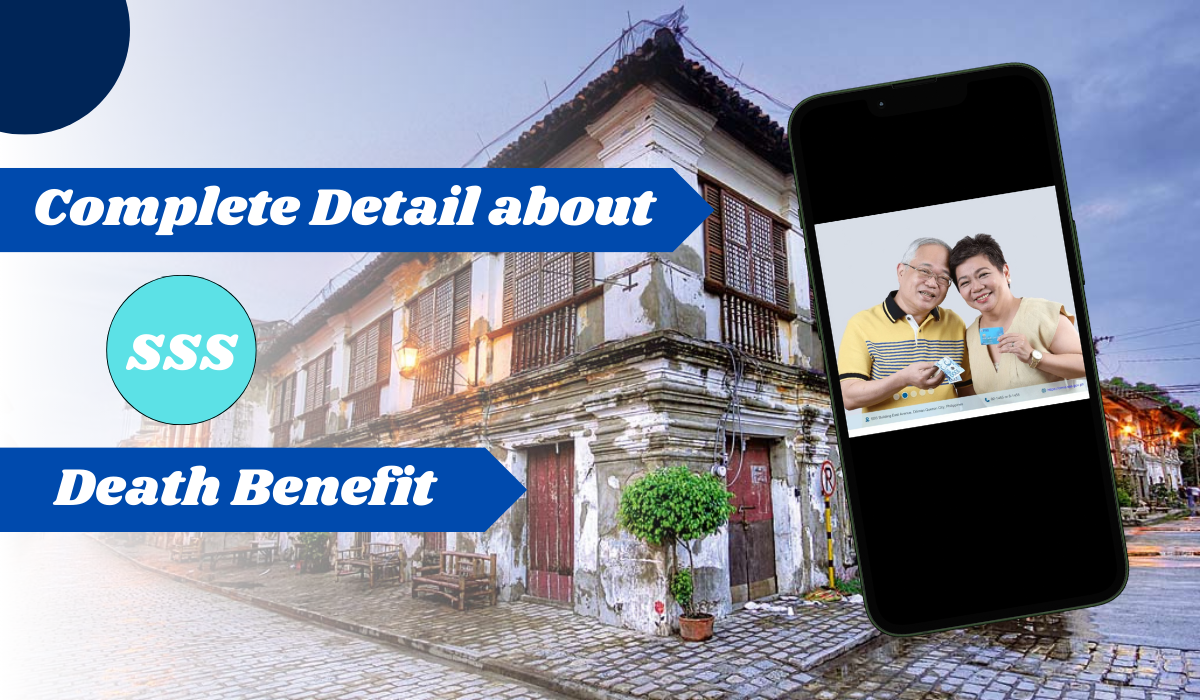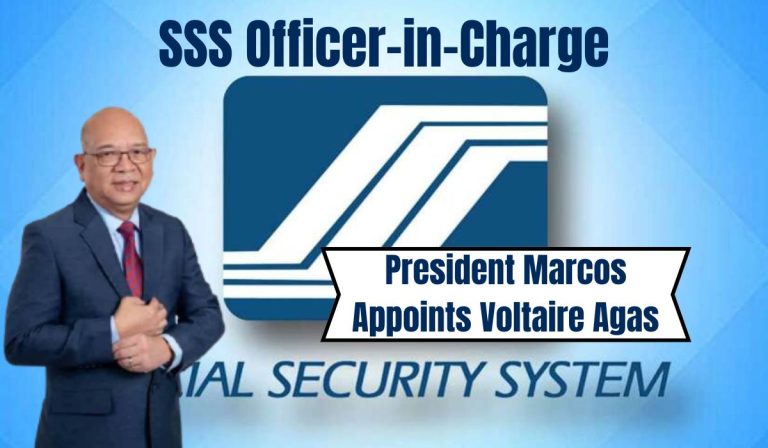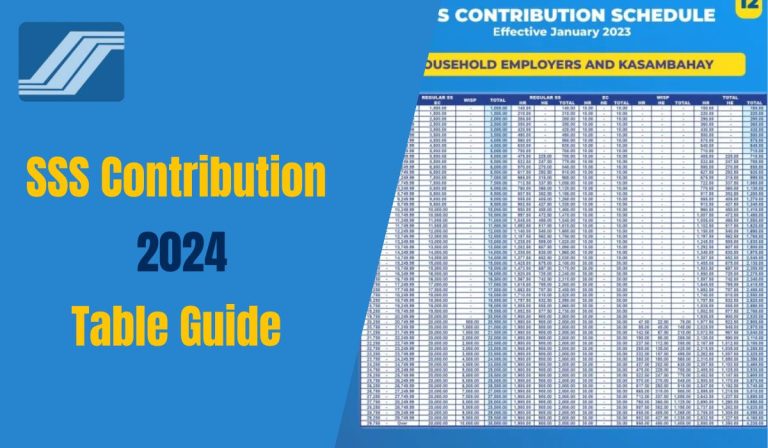SSS Death Benefit – Complete Detail about SSS Death Benefit

The SSS Death Benefit is an important component of the Social Security System (SSS) in the Philippines, aimed at offering financial support to the family or beneficiaries of a deceased member. This benefit is especially crucial for families who have lost their primary breadwinner, as it provides much-needed financial relief during a challenging period. Understanding the eligibility criteria, the types of benefits available, and the step-by-step process of claiming the SSS Death Benefit is essential for both members and their families.
In this guide, we will thoroughly explain how to navigate the process of claiming the Death Benefit, the different types of benefits available, and how they can significantly aid families in their time of grief. We will also outline the critical steps that need to be taken to ensure the smooth processing of claims.
Read Also About: SSS Online Registration
What is the SSS Death Benefit?
The SSS Death Benefit is a financial assistance program provided by the Social Security System (SSS) to the legal beneficiaries of a deceased member. This benefit aims to support the surviving spouse, children, or other dependent family members by helping them cover funeral expenses, medical bills, or daily living costs after the member’s passing.
As part of the broader SSS social security program, the Death Benefit serves as a financial safety net for Filipino families, ensuring that they are not left struggling financially after losing a loved one.
Types of Death Benefits
- Monthly Pension – A lifetime monthly cash benefit granted to the primary beneficiaries of a deceased member, provided the member had contributed at least 36 months before the semester of death.
- Lump Sum Benefit – A one-time cash payment given to beneficiaries if the deceased member had contributed less than 36 months. If no primary beneficiaries are present, the lump sum is awarded to secondary beneficiaries.
Eligible Beneficiaries for the SSS Death Benefit
This benefit is given to the legal and designated beneficiaries of the deceased SSS member. Primary beneficiaries typically include the spouse and children, while secondary beneficiaries, such as parents or other close relatives, may receive the benefit if no primary beneficiaries exist.
SSS Death Benefit – Dependent’s Pension
The SSS provides a dependent’s pension to the qualified children of a deceased member. Eligible dependents include legitimate, legally adopted, legitimated, and illegitimate children, provided they were conceived, legally adopted, or legitimated before the member’s death. Each eligible dependent is entitled to a monthly pension equivalent to 10% of the member’s basic pension or ₱250, whichever is higher. A maximum of five (5) dependent children can receive this benefit, starting with the youngest, and no substitution is allowed.
If there are five (5) or more qualified children, priority is given to legitimate, legitimated, and legally adopted dependents over illegitimate children.
A dependent child’s pension will stop if they:
- Get married
- Pass away
- Become gainfully employed
- Reach 21 years of age, unless they have a physical or mental disability that prevents them from supporting themselves, provided the condition was present at birth or developed during childhood.
Deductions from Death Benefits
Any outstanding short-term member loans of a deceased member will be fully deducted from the death benefit payment, regardless of whether the loan’s payment term has expired as of the contingency date. The contingency date will be used to assess any applicable interest and penalties.
Additionally, certain benefits may overlap with the date of death, such as sickness, maternity, and partial disability benefits.
For unemployment benefits, a final and executory resolution of a case filed by an involuntarily separated employee against their employer may impact eligibility. The benefit will be considered settled if:
- The termination of employment followed substantive and procedural due process based on Article 297 (formerly Article 282) of the Philippine Labor Code, as amended.
- The case resulted in the reinstatement of the employee, along with the payment of back wages.
- The employee is rehired or reemployed within a compensable period or within two months of the involuntary separation.
How to File an SSS Death Benefit Claim
A death benefit claim can be filed at any Social Security System (SSS) branch over the counter (OTC) or through the My.SSS online portal. Below are the steps to ensure a smooth application process.
Step 1: Check Your Eligibility
Before applying, confirm that you meet the SSS eligibility requirements:
- You must be the legal spouse of the deceased SSS member.
- You must not have remarried, cohabited, or entered into a live-in relationship before or after the member’s death.
Only those who meet these conditions can proceed with the online claim application.
Step 2: Access or Register for a My.SSS Account
To file your claim online, you need an active My.SSS account:
- If you already have an account, log in.
- If not, click “Not yet registered in My.SSS?” and follow the registration process.
Step 3: Go to the Death Benefit Claim Section
Once logged in, navigate to “E-Services” and select “Death Benefit Claim Application.” This will direct you to the online application form.
Step 4: Complete the Application Form
Enter the required information accurately:
- Your full name, contact details, and marital status.
- The deceased member’s SSS number and date of death.
Step 5: Enroll Your Bank Account for Disbursement
For seamless benefit disbursement, you must register a bank account linked to SSS:
- Provide correct and updated bank details.
- Use an SSS-accredited bank to prevent processing delays.
Step 6: Upload Supporting Documents
Scan and upload clear copies of the required documents:
| Document | Purpose |
|---|---|
| Marriage Certificate | Confirms legal spousal relationship |
| Death Certificate | Verifies the member’s passing |
| Valid ID | Confirms the applicant’s identity |
Note: Ensure all documents are clear, legible, and meet the file size requirements before submission.
Step 7: Review and Submit Your Application
Before finalizing your claim, carefully go through all the details you have entered to ensure accuracy. Once you have verified the information, click the “Submit” button to proceed. After submission, your application will be officially sent to the SSS for processing.
Step 8: Wait for Confirmation and Processing
After successfully submitting your application, you will receive a confirmation email or a notification through your My.SSS account. The SSS will then review your claim and provide updates regarding:
- The expected date for disbursement
- The current status of your application
- Any additional documents required, if necessary
Claim Form of SSS Death Benefit
Claim Requirements of SSS Death Benefit
To file an SSS death benefit claim, submit a photocopy of valid IDs, an original or certified true copy of required documents, and supporting documents for authentication.
Basic Requirements:
- Death Claim Application Form (Standard or Portability Law)
- Valid ID of Claimant (UMID or alternative)
- Certified Death Certificate (LCR/PSA)
- Affidavit of Death Benefit (SSS Form CLD-1.3A)
- Bank Details for Pension Payments
- If Member Died Abroad – Death certificate from the host country or Philippine Embassy
Disbursement Options:
- UMID ATM Enrollment
- Bank Account (Passbook, ATM, or Bank Certificate)
- E-wallet (PayMaya) or Remittance Centers (MLhuillier)
Required Identification:
- Primary IDs: UMID, SSS ID, Driver’s License, Postal ID, Seaman’s Book, Voter’s ID, etc.
- If No Primary ID: Two secondary IDs (one with a photo)
Additional Requirements by Beneficiary Type:
- For Spouse & Children: Marriage/birth certificates (PSA/LCR)
- For Parents: Member’s birth certificate (if not in records)
- For Legal Heirs: Joint Affidavit (CLD-1.3), birth certificates of heirs
For Claims Filed Abroad:
- Documents must be translated (if applicable)
- Photocopies are accepted if signed by an SSS Foreign Representative
For Authorized Representatives:
- Two valid IDs (Claimant & Representative)
- Letter of Authority (LOA) or Special Power of Attorney (SPA) (Valid for 6 months in PH, 1 year abroad)
Supporting Documents of SSS Death Benefit
When applying for the SSS Death Benefit, certain documents are required to verify the claim. If key documents are unavailable, alternative proofs must be provided. Below are the required documents based on different scenarios:
1. If the Death Certificate is Unavailable:
- An initial certificate of non-availability from the PSA/LCR or a foreign government agency confirming that the death records are intact but no death record exists for the deceased member.
- Any of the following as an alternative proof of death:
- Death certificate issued by a parish or church.
- Burial certificate issued by the cemetery administrator.
- Cremation certificate issued by the crematory.
2. If the Marriage Certificate is Unavailable:
- A certificate of non-availability from the PSA/LCR or a foreign government agency stating that the marriage records are intact but no record exists for the requesting party.
- Any of the following as an alternative proof of marriage:
- Marriage certificate issued by a parish, church, ministry, congregation, sect, religious organization, or local government unit.
- Alien Certificate of Registration showing the name of the spouse (if applicable).
3. If the Birth Certificate is Unavailable:
- A certificate of non-availability from the PSA/LCR or a foreign government agency confirming that no birth record exists for the requesting party.
- Any of the following as an alternative proof of birth:
- Baptismal or dedication certificate (or an equivalent document) issued by a religious organization, showing the child’s date of birth and parents’ names.
4. If the Baptismal/Dedication Certificate is Also Unavailable:
- A certificate of non-availability from the relevant religious organization.
- Any of the following documents that include the dependent’s name, date of birth, and parents’ names:
- School records or report cards.
- Educational, insurance, or health records.
- Employment records of the deceased member.
- Records from PhilHealth, GSIS, or Pag-IBIG.
- A member’s income tax return.
- An SSS membership record submitted before May 1997.
If a deceased SSS member had a marriage abroad or prior marriages in the Philippines, certain additional documents must be provided based on the circumstances.
- If the marriage was annulled or declared null, a Certificate of Finality of Judgment or an annotation on the marriage certificate is required.
- If the deceased member became a naturalized citizen before marriage abroad and later obtained a divorce after acquiring foreign citizenship, the Certificate of Naturalization and Divorce Decree (or an equivalent document) must be submitted.
For spouses who were separated—either legally or in fact—from the deceased member:
- A joint affidavit from two individuals, preferably close relatives of the deceased, confirming the separation and stating that the surviving spouse depended on the deceased for support. This affidavit must not indicate that the surviving spouse was responsible for the separation.
- If the surviving spouse has no known or trustworthy relatives of the deceased, they may submit their own affidavit stating this.
- A court declaration confirming that the deceased member was legally obligated to continue supporting the surviving spouse, and that the surviving spouse was not responsible for the separation.
For legally adopted children or birth certificates without proper annotations:
- An Adoption Decree and a Certificate of Finality of Judgment must be submitted.
- Adoption must have been completed before the child’s death.
Claim Application Form of SSS Death Benefit
SSS Death Benefit: Amount and Coverage
The Social Security System (SSS) provides death benefits to the primary beneficiaries of a deceased member, which include the spouse and dependent children. These benefits consist of a monthly pension and a funeral grant, both of which are determined based on the member’s total contributions.
- Funeral Benefit – The amount varies depending on the number of contributions made. It ranges from a minimum of ₱20,000 to a maximum of ₱60,000 for members who have completed at least 36 contributions.
- Monthly Death Pension – This is granted to the primary beneficiaries and is computed based on the member’s credited years of service (CYS):
- ₱1,000 for members with fewer than 10 CYS
- ₱1,200 for those with at least 10 CYS
- ₱2,400 for members with 20 or more CYS
SSS Death Benefit Monthly Pension
The monthly pension for the SSS death benefit is determined based on the highest value among the following calculations:
- Formula 1: PHP 300 + (2% × AMSC) + (20% × AMSC) × (CYS – 10)
- Formula 2: 40% of the Average Monthly Salary Credit (AMSC)
- Minimum Pension:
- PHP 1,000 for members with less than 10 years of credited service (CYS)
- PHP 1,200 for members with at least 10 CYS
- PHP 2,400 for members with at least 20 CYS
Definitions:
- AMSC (Average Monthly Salary Credit): The average of the member’s salary credits used for benefit computation.
- CYS (Credited Years of Service): The total years credited for a member’s contributions.
Lump Sum Benefit
If a deceased member had contributed for less than 36 months, the primary beneficiaries are entitled to a lump sum benefit based on the higher of the following:
- The monthly pension multiplied by the total number of paid contributions before the semester of death.
- Twelve (12) times the computed monthly pension.
For secondary beneficiaries, the lump sum benefit is determined as follows:
- If the deceased member had completed at least 36 contributions, the lump sum is 36 times the monthly pension.
- If fewer than 36 contributions were made, the benefit will be the higher of:
- The monthly pension multiplied by the total contributions paid.
- Twelve (12) times the monthly pension.
Who Can Claim SSS Death Benefits?
The SSS death benefit is provided to the rightful beneficiaries of a deceased member. The primary beneficiaries include the dependent spouse, who remains eligible until remarriage, and dependent children under the age of 21 who are unmarried and unemployed. These children may be legitimate, legitimated, legally adopted, or illegitimate.
If the deceased member did not meet the required 36 months of contributions before passing away, a lump sum benefit is given instead. In such cases, if there are no primary beneficiaries, the benefit is awarded to the secondary beneficiaries, such as the deceased member’s dependent parents.
Common Issues and Concerns When Applying for the SSS Death Benefit
Applying for the SSS Death Benefit is generally a straightforward process, but beneficiaries may encounter certain challenges. Understanding these common issues and their solutions can help ensure a smoother application process.
- Insufficient Contributions – If the deceased did not meet the required number of contributions for the Death Pension, the claim may not qualify. However, if at least 36 contributions were made, the beneficiary may still be eligible for the Funeral Benefit. Checking the deceased’s contribution records before applying can help avoid complications.
- Missing Documents – A major reason for delays in claim processing is incomplete documentation. Beneficiaries must ensure they have all required documents, including the Death Certificate, proof of the deceased’s SSS membership, and necessary birth or marriage certificates.
- Discrepancies in SSS Records – Sometimes, outdated or incorrect information in the SSS database can cause verification issues. In such cases, beneficiaries should coordinate with the SSS help desk to update or correct the records before filing a claim.
- Delays in Payment – Even after a claim is approved, processing time for Death Pension payments may take longer due to administrative procedures. Regularly checking the claim status with SSS and ensuring all details are accurate can help prevent further delays.
FAQs About




